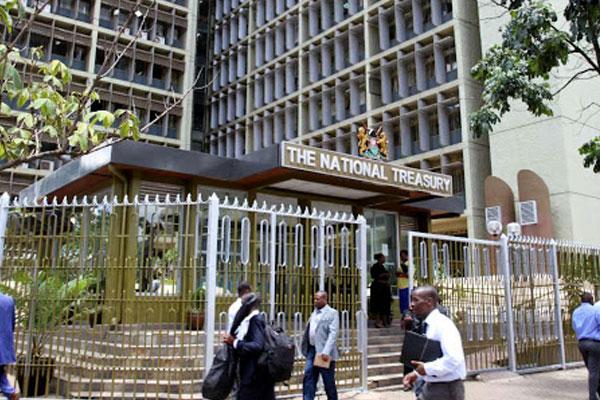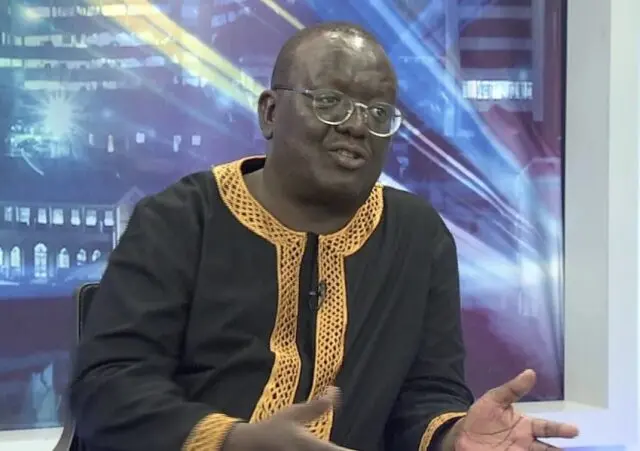Yatani faces delicate balancing act, mulls Sh1tr to lower deficit

Seth Onyango @SethManex
Treasury plans to allocate nearly Sh1 trillion in financial year 2020/21 to offset the huge fiscal deficit due to revenue shortfalls on the back of Covid-19 pandemic.
This means plans for fiscal consolidation have been pushed off track due to dwindling revenue collections and increased spending, which came on the back of an already weakened economy following locust invasion and poor weather.
This portends a delicate balancing act for National Treasury Cabinet Secretary Ukur Yatani who is currently preparing his inaugural budget to be presented in July for the next fiscal year.
He will, for instance, need to curtail the expenditure of ministries and departments that are not directly involved in the Covid-19 operations since raising revenue will prove difficult.
Government documents show that Kenya’s fiscal deficit had expanded to 7.7 per cent of gross domestic product (GDP) in the 2018/2019 financial year from 7.4 per cent in 2017/2018 before the virus struck.
Public debt soared to 62.4 per cent by December 2019 to hit Sh6 trillion.
The government’s target this year was to reduce the deficit by 1.4 percentage points to 6.3 per cent of GDP and contain the huge debt going forward.
In a briefing note to President Uhuru Kenyatta last week, Yatani cited the aforementioned factors asserting they have devastated revenues hence the need for excessive borrowing.
“Taking into account the projected revenues and expenditure, the fiscal deficit inclusive of grants is expected at Sh812 billion in financial year 2020/21 and further Sh722 billion in financial year 2021/22. This will remain fiscal consolidation over the medium so as to stabilise growth in public debt,” he said.
Treasury hopes to finance the deficit by net domestic borrowing of Sh480 billion (4.3 per cent of GDP), foreign financing of Sh328 billion (2.9 per cent of GDP) and other domestic financing of Sh3.8 billion (0.03 of GDP).
Total expenditure in the next financial year is projected to hit Sh2.7 trillion which is 24.2 per cent of the GDP of which recurrent expenditure will be Sh1.8 trillion, leaving a paltry Sh555 billion for development.
Treasury sets revenue for 2020/21 at an ambitious Sh1.8 trillion, which appears far-fetched given the widespread cessation of economic activity in Kenya since the outbreak of Covid-19.
Already, Kenya Revenue Authority (KRA) has missed its tax collection targets for the nine months ending March by Sh211.9 billion. Appropriation-in-Aid revenues stood at Sh1.33 trillion down from the initial forecast of Sh1.54 trillion.
Declaration fees
Yatani blamed the sub-optimal collections to a slump in import-related taxes including import duty, VAT on imports, import declaration fees, and railway development levy.
“At the same time, other domestic taxes have shrunk due to declined incomes and depressed consumption as the government enhanced Covid-19 containment measures that restricted movements of persons within four counties and the rest of the Country,” he told the Senate ad hoc committee on the Covid-19 pandemic.
Yatani will find it hard to mobilise funds for his Sh2.7 trillion budget that comes on the back of the crippling virus.
The financial year 2020/21 and the Medium-Term Budget is being prepared against a background of weakening global economic prospects as a result of the Covid-19 pandemic.
As a result of the adverse effects of Covid-19 Pandemic, IMF in its April 2020 report downgraded the global growth for 2020 to -3.0 per cent down from the 3.3 per cent projection in January 2020,” he told the Head of State, signalling tough times ahead for Kenyans.
Covid-19 has triggered a combined negative supply and demand shock of unprecedented proportions, with people hoarding cash to see how the situation unfolds.
Both are having a significant impact on the production of goods and services, and because everyone’s income ultimately derives from production with household incomes quickly falling amid salary freezes and job cuts.











